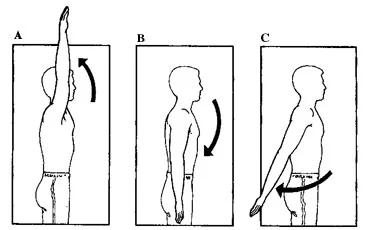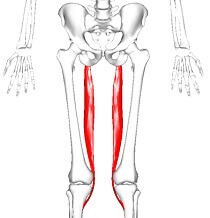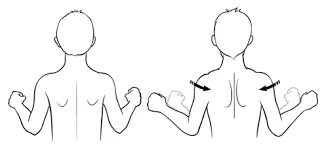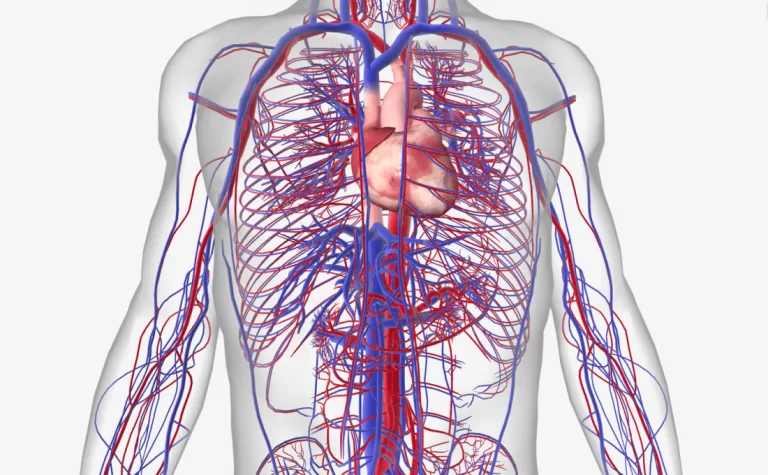Shoulder Flexion & Extension
Shoulder flexion and extension refer to movements of the shoulder joint that involve raising and lowering the arm in front of or behind the body, respectively.
Table of Contents
Shoulder Flexion
What is shoulder flexion?
Shoulder flexion refers to the movement of the shoulder joint that involves raising the arm forward and upward in front of the body. It is the action of lifting your arm to reach or touch something in front of you.
It’s a movement you probably do all day without realizing it. Reaching from shelf to jar is an example of a shoulder. flexion. This movement is also
important for most sports that use the upper body whenever a volleyball player passes or a forward hit With three-pointers, they use shoulder flexion. Stretches for shoulder flexors Stretching can increase flexibility and aid in injury avoidance.
Include these shoulder stretches to cool down after every workout which includes shoulder flexion exercises.
- Hands-behind-the-back chest stretch
You will feel this simple but effective stretch in your shoulders and pectoral muscles.
Stand with your feet wide apart. Extend both hands behind you and interlace your fingers. Look up, lift your chest to the ceiling, pull your hands to the floor, and extend your arms. Hold for 15 seconds and release.
- Stability ball chest stretch
Don’t be fooled by the subtle movement of this chest and shoulder stretch—the small contractions will help release tight bums and shoulders.
Start on all fours with a stability ball placed on your right side. Raise your right hand to three o’clock and rest your palm on the stability ball.
Slowly lower your body until you feel a stretch on the right side of your chest. Raise your fingers and hold them up for one second. Then release
your fingers down and repeat two more times. Repeat the set with the arm at 2 o’clock, then switch arms and repeat the entire set on the left.
What muscles are used in shoulder flexion?
Shoulder flexors include the deltoid, pectoralis major, and coracobrachialis. The front end of the deltoid and the clavicle.
The pectoralis major is the prime mover of shoulder flexion and the coracobrachialis is a synergistic muscle, meaning it assists. the main factors.
This is how these muscles work in your body.
What is the normal shoulder flexion range of motion?
Shoulder flexion
A tilt is a movement that reduces the angle between two parts connected by a joint. If you keep your arms straight and palms facing each other sides and raise your arms in front of your body to point your arms at something in front of you, you are practicing flexion. 180 degrees is the average range of shoulder flexion. This means moving the hands from the palms to the side of the body to the highest point you can raise your arms above your head.
Benefits of flexion training
- consider the benefits of regular compensation increases.
- This exercise strengthens the shoulder muscles. The front lift is an isolation exercise that activates the shoulder muscles – especially the front shoulder muscles also called.
- anterior deltoids. This exercise improves shoulder size and tone by contracting the deltoid muscles.
- This exercise helps improve the range of shoulder flexion.
- This exercise requires a full range of motion in your shoulder joint, which increases mobility.
- The fronts also narrow your shoulder flexors, including the anterior part of the deltoid and the clavicle of the chest.
- This exercise uses several muscle groups in the upper body.
- Helps maintain upper limb strength.
- Helps maintain mobility and stability of the shoulder joint.
- Helps with upper movements.
Exercise for Shoulder Flexion
- Exercise with a weight
- Shoulder flexion: Stand and keep weight on the injured shoulder. Keeping your arms straight, slowly raise your arms above your head as far as you can without pain. Don’t raise your arms above your head unless your doctor says it’s okay. Don’t let your shoulder lift it. Hold this posture for the specified number of seconds. Slowly return to the starting position.
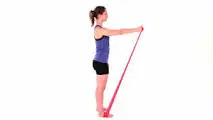
- Exercise with an Exercise band
- Shoulder flexion: Wrap the training strap around a heavy, stable object near your leg. Grab the strap with your injured shoulder hand. Keep your arms straight. Slowly pull the strap up and over your head as far as you can without pain. Don’t raise your arms above your head unless your doctor says it’s okay. Don’t let your shoulder lift it. Hold this posture for the specified number of seconds. Slowly return to the starting position.
How to bend with perfect form?
- Curl up with dumbbells
- To flex, you should start with 3-4 sets of 10-12 repetitions. Choose sets and reps based on your ability to maintain perfect form and focus on form before moving on to heavier weights.
- Hold the bar and return to the starting position. stand with your feet shoulder-width apart and bend your knees slightly. The position should be a tall straight body and shoulders above the hip joint. you Maintaining a neutral posture for the head and neck is important.
- Throughout the action, your chin should be held beneath your chin as if you were carrying an egg. Distribute the weight evenly on both feet and keep your feet on the ground for balance. With your palms facing your feet, grasp the dumbbells in front of your body. The elbows on both of your arms should be slightly bent.
- Tighten your shoulders and hips as you engage your core. Each repetition must be started from this position. Lifting your arms away from your body gently. raise your arms until your elbows are in line with your shoulder joints or slightly below your shoulder joints. Let the shoulders flow naturally with the shoulder joint.
- The palms should face the ground at the top of the movement. After a brief period of holding, lower the dumbbells. Slowly lower your arms to lower the dumbbells to the starting position.
- There are different variations of Bending which are explained below
- After you’ve practiced the basic curl exercise, move on to the front lift by trying one of these curl variations.
- Seated dumbbell roll:
- How to do it?
- For this variation, you need to sit on a flat bench with your feet shoulder-width apart and grab a dumbbell with both hands, with the top handle at your sides. Slowly raise both arms to the ceiling, hold for a few seconds, then slowly lower your arms and return to the starting position.
- Dumbbell roll resting on the wall
- When you do regular flexion exercises, there is a tendency to use more of your body’s range of motion. This activates other muscles, such as the trapezius and back, to rotate upwards. To prevent this, we can do bends with our backs against the wall to prevent our backs from swaying.
- How to do it?
- You should stand closer to the wall with your back fully against the wall, holding dumbbells with both hands. The sides of your arms should be straight.
- stand with your feet shoulder-width apart and bend your knees slightly. The position should be a tall straight body and shoulders above the hip joint. Maintaining a neutral posture for the head and neck is important.
- Throughout the action, your chin should be held beneath your chin as if you were carrying an egg. Distribute the weight evenly on both feet and keep your feet on the ground for balance.
- Grab the dumbbells in front of your body with your palms facing your feet. The elbows on both of your arms should be slightly bent. Tighten your shoulders and hips as you engage your core. every representative should start from this position.
- Gently raise your arms away from your body toward the ceiling. raise your arms until your elbows are in line with your shoulder joints or slightly below your shoulder joints. Let the shoulders flow naturally with the shoulder joint.
- The palms should face the ground at the top of the movement. After a brief period of holding, lower the dumbbells. Slowly lower your arms to lower the dumbbells to the starting position.
- Barbell Flexion
- In this variation, you must use a bar instead of a pair of dumbbells, this variation distributes the weight evenly and involves a shorter movement than the barbell exercise.
- How to do it?
- Bending the rod
- Grab the bar and rise to the starting position, stand with your feet shoulder-width apart, and slightly bend your knees. The position should be a tall straight body and shoulders above the hip joint.
- Maintaining a neutral head and neck posture is important. Throughout the action, your chin should be tucked in as if you were cradling an egg beneath your chin. Distribute the weight evenly on both feet and keep your feet on the ground for balance.
- Grab the bar in front of your body with your palms facing your feet. Arms should be straight and elbows slightly bent. Tighten your shoulders and hips as you engage your core. every representative should start from this position.
- Gently raise your arms away from your body toward the ceiling. raise your arms until your elbows are in line with your shoulder joints or slightly below your shoulder joints.
- Let the shoulders flow naturally with the shoulder joint. The palms should face the ground at the top of the movement. Hold for a few seconds before lowering the bar. Slowly lower your arms to lower the bar to the starting position.
- Inline Barbell Flexion (back on the bench)
- This is another way to do front lifts. Here, your back is supported on the bench and you are in a semi-standing position. It’s a great functional workout that engages your core muscles, making it more athletic.
- How to do it?
- Hold the bar in your hands. Your chin should be tucked throughout the movement as if you were holding an egg under your chin. Distribute the weight evenly on both feet and keep your feet on the ground for balance.
- Grab the bar in front of your body with your palms facing your feet. Your arms need to have a small bend in the elbows. Tighten your shoulders and hips as you engage your core. every rep should start from this position.
- Gently raise your arms away from your body toward the ceiling. raise your arms until your elbows are in line with your shoulder joints or slightly below your shoulder joints. Let the shoulders flow naturally with the shoulder joint.
- The palms should face the ground at the top of the movement. Hold for a few seconds before lowering the bar. Returning to the beginning posture requires slowly lowering your arms.
- Dumbbell Flexion bent forward
- This variation allows for a greater range of motion than the withdrawal of the basic advantage.
- How to do it?
- For this exercise, you need to sit on an inclined bench at an angle of 45-50 degrees and lift dumbbells from the sides. Your chin should be tucked throughout the movement as if you were holding an egg under your chin. Distribute the weight evenly on both feet and keep your feet on the ground for balance.
- Grab the dumbbells in front of your body with your palms facing your feet. Your arms should be slightly bent at the elbows – tighten your shoulders and hips while contracting your core. every representative should start from this position.
- Gently raise your arms away from your body toward the ceiling. raise your arms until your elbows are in line with your shoulder joints or slightly below your shoulder joints. Let the shoulders flow naturally with the shoulder joint.
- The palms should face the ground at the top of the movement. Hold for a few seconds before lowering the stop. Returning to the beginning posture requires slowly lowering your arms.
- Variable dumbbell Flexion
- This variation involves a unilateral arm movement.
- How to do it?
- Hold one dumbbell in your right hand and return to the starting position. Your knees should be slightly bent as you stand with your feet shoulder-width apart. The position should be a tall straight body and shoulders above the hip joint. You must maintain a neutral position for your head and neck.
- Your chin should be tucked throughout the movement as if you were holding an egg under your chin.
- Distribute the weight evenly on both feet and keep your feet on the ground for balance. Take a standing position in front of your body with your palms facing your feet. Your arms should be straight, elbows slightly bent.
- Tighten your shoulders and hips as you engage your core. Each repetition must be started from this position. Gently raise your arms away from your body toward the ceiling. raise your arm until the elbow is in line with the shoulder joint or slightly below the shoulder joint.
- Let the shoulders flow naturally with the shoulder joint. The palm should face the ground at the top of the movement.
- Hold for a few seconds before lowering the stop. Slowly lower your arms to lower the dumbbells to the starting position. then move to the left in the same motion.
- Weight Plate Flexion:
- How to do it?
- Hold the weight plate on both sides with the thumbs up. you must stand tall and let your arms hang completely straight in front of your body. Keeping a slight bend in the elbows, raise the plate until the arms are parallel to the floor.
- Hold for a few seconds and then slowly lower the weight plate back to the starting position.
- Boiler bell bending
- How to do it?
- Grab the kettlebell with both hands and return to the starting position. Your knees should be slightly bent as you stand with your feet shoulder-width apart. The position should be a tall straight body and shoulders above the hip joint. In a neutral position, the head and neck should always be held. As you do the action, your chin should be tucked in so that it seems like you are carrying an egg.
- Distribute the weight evenly on both feet and keep your feet on the ground for balance. Hold the kettlebell in front of your body with your palms facing your feet. Arms should be straight and elbows slightly bent.
- Tighten your shoulders and hips as you engage your core. every representative should start from this position. Gently raise your arms away from your body toward the ceiling. raise your arms until your elbows are in line with your shoulder joints or slightly below your shoulder joints. Let the shoulders flow naturally with the shoulder joint.
- The palms should face the ground at the top of the movement. Press and hold for a few seconds before removing the kettle. Slowly lower your arms to lower the kettlebell to the starting position.
- Cable bending
- How to do it?
- For this variant, you need a rope and a pulley. Attach the pulley to the bottom of the cable machine and attach a straight bar to it.
- You should stand shoulder width apart with your back against the cable machine. Then hold both ends of the cable and stand up straight with your arms out in front of you. Raise your hands at shoulder height to the ceiling. then return to the starting position by lowering your arms, return to the starting position, and repeat the movement.
- Bending the bent cable
- How to do it?
- For this exercise, you need to attach both handles to the lower end of the cable machine and place the incline bench between them. Fix the bench at an angle of about 90 degrees. hold both handles with both hands and lie flat on the bench. don’t overbend your neck and lower back. Slowly raise your arms forward and keep them at shoulder height. you will feel the tension in the anterior shoulder muscles. Slowly raise your arms down and extend your shoulder down.
- Horizontal cable Flexion
- Here’s a different version of the front deadlift for you, where your body rests on the ground and you can only use your front deltoids to move the cables. You can also combine this exercise with another cable exercise to make it a superset and do it at the end of your workout.
- How to do it?
- Lie on the yoga mat holding both ends of the cable. place your hand on your thigh and this is the starting position. Begin the exercise by raising your arms to the ceiling with a slight bend in the elbows. contract your deltoid as you raise your arm. Hold for one second at the top and then slowly return to the starting position.
Note: You may think that all these variations are the same. But each of these variations of this exercise uses your pectoral muscles at a different angle, which makes it different. So each of these exercise variations puts a different load on your deltoids to increase strength.
Shoulder extension
What is Shoulder Extension?
The extension is a movement that increases the angle between two parts connected by a joint. When you reach behind your back—think of putting your hands in your back pocket—you’re practicing stretching.
Shoulder extension involves the free movement of the upper arm as it descends from a raised position in front of the body, where the entire limb returns to its normal resting position at the waist and continues behind the body, allowing limited movement of the arms behind the. body back
Shoulder extension occurs at the humeral joint, also known as the shoulder joint, and involves the coordinated action of various muscles connecting the shoulder girdle to produce a smooth, flowing movement.
Workplace testing explains shoulder Extension
Shoulder extension involves lowering the entire arm from a bent or raised position until the limb is in line with the pelvis and outside the body, allowing the arm to have limited movement behind the back.
Shoulder extension involves the interaction of several muscles, including the latissimus dorsi, the major muscles, the posterior deltoid, the triceps trachea, and the smaller muscles attached to the glenohumeral (shoulder) joint, which simultaneously contract and lower the arm.
Although the shoulder joint is versatile for performing multidirectional activities, it is very prone to injury, especially biceps tendon tears. This type of injury is relatively common, especially among men, and is often caused by one of two main causes: arms reaching out to lift objects or people reflexively grabbing with outstretched arms (arms behind the body) to cushion a hard fall.
As a result, the biceps tendon, which connects muscles and bones, separates either partially or completely, causing moderate to severe pain while limiting the range of motion, which in turn reduces physical activity. A trained clinician can assess shoulder extension using standardized measurements to determine the normal range of motion of the shoulder during recovery.
Shoulder Extensors
The latissimus dorsi, teres major, and posterior deltoid are the primary shoulder extensors.
Basic shoulder extension machine
Muscles originating from the back of the shoulder joint extend the arm. These muscles include the posterior fibers of the latissimus dorsi and deltoid, and both act as prime movers.
What is the Normal shoulder Extension range of motion?
45 to 60 degrees is the normal range of motion. Bringing the upper limb posterior in the sagittal plane is what it means to do this.
Shoulder extension exercise
- Isometric Shoulder Extension
- Place your back against a wall while standing upright with your arms by your sides. Keep your elbows straight and press your hands back against the wall.
- Hold for 5 seconds, and then relax. Repeat 5–10 times during the session. Do three sessions a day. Train with weights
- Shoulder extension: Lie on your stomach on a hard table. Let your arms hang at your side. Hold the weight in both hands, palms facing the body.
- Keep your arms straight and gradually raise your arms parallel to the floor into a Y shape. When your arms are perpendicular to the earth, stop. Keep it as long as the instructions say. Slowly return to the starting position.
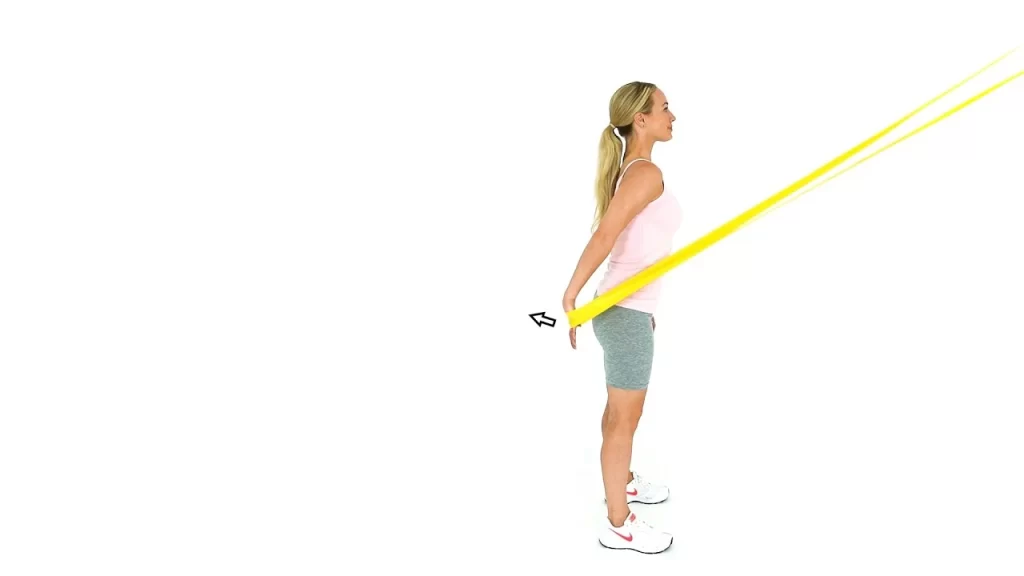
- Exercise with an exercise band
- Shoulder extension: Wrap the training strap around a heavy, stable object. The strap should be at chest height. Stand and hold both ends of the strap with both hands. Step back and straighten your arms. Squeeze your shoulders together and pull your arms back and down. Keep it as long as the instructions say. Slowly return to the starting position.
- Bilateral shoulder extension
- This exercise, which only requires a resistance band, increases shoulder mobility and strengthens the upper back. The triceps and biceps are also lengthened and strengthened by it.
- How to do it?
- Wrap the resistance band around a pole or other sturdy object at hip height. Stand facing the bar with one end in each hand and arms at your sides.
- Position yourself far enough from the attachment point that there is tension in the band. Keeping your arms straight, extend your arms straight back as far as you can comfortably go. Squeeze your shoulders together. Pause for a moment, then return to the starting position with control. Do one to three sets of 10-20 repetitions.
- Rocking table
- This variation of the yoga pose builds strength and mobility in the shoulders by focusing on lengthening the anterior deltoids at the front of the shoulders to improve the stretch. Never try to hard when working into a stretch.
- How to do it?
- Sit with your knees bent and your feet on the floor. Place your palms approximately 12 inches behind you, slightly wider than your hips. To start, keep your fingers away from your body. As your shoulders open, you can point your fingers behind you or even to you to enhance the stretch. Raising your hips will align them with your knees. Make sure your wrists are above your shoulders. Keep your chest open and squeeze your shoulders.
- Stay here for a few seconds. Begin a gentle forward swing and then return to a neutral position. Repeat several times and then lower your hips to the floor. Repeat the exercise one or two more times.
- Sit with your knees bent and your feet on the floor. Place your palms approximately 12 inches behind you, slightly wider than your hips. To start, keep your fingers away from your body. As your shoulders open, you can point your fingers behind you or even to you to enhance the stretch. Raising your hips will align them with your knees. Make sure your wrists are above your shoulders. Keep your chest open and squeeze your shoulders.
How to exercise safely and avoid injury?
If you have a pre-existing or existing health condition that is not good, consult your doctor before starting this exercise. Proper exercise technique is essential for an exercise program to be effective and safe, but you may need to modify each exercise to achieve maximum results for your needs.
Always choose a weight that allows you to control your body during the workout. Pay attention to your body when doing the exercises and stop as soon as you feel pain or discomfort.
As you make steady progress and build strength, warm up properly, rest, and add nutrition to your training program. Your training effects are ultimately based on your ability to adequately recover muscle from your workouts. Before performing exercises that train the same muscle groups, you must rest properly for 24-48 hours.
Rest allows the muscles to recover sufficiently. If you have a past or current shoulder injury, talk to your doctor or physical therapist about whether or not you should do this exercise. Reversing this exercise can cause shoulder stinging and you may feel pain if you are prone to tendinitis or bursitis in this joint. Do not continue this exercise if you feel pain. Start light and aim for 12-15 repetitions in two to three sets, or repeat this exercise according to the number of sets and repetitions in your daily training program.
FAQs
When your arms are anywhere from relaxed at your sides to directly above your head, you are doing a shoulder shrug. Extension occurs when you move your arms and push them behind you. The muscles involved in the flexion movement are the anterior deltoid, pectoralis major, and coracobrachialis.
The latissimus dorsi muscle at the level of the shoulder is the primary internal rotator because it is most important for shoulder adduction and flexion. It is a fusiform muscle.
A normal range of motion to extend your shoulders to the highest point you can raise your arm behind you, starting with your palms next to your body, is 45 to 60 degrees.
The axillary nerve begins in the neck and extends to the shoulder. This causes movement and sensation in the shoulder and back of the upper arm. Injuries to this nerve can affect your ability to turn or lift your arm.
Shoulder Flexion and Extension Exercises – What You Need to… Shoulder extension: Lie on your stomach on a hard table. Let your arms hang at your side. Hold the weight in both hands, palms facing the body. Keep your arms straight and slowly raise your arms parallel to the floor into a Y shape.

